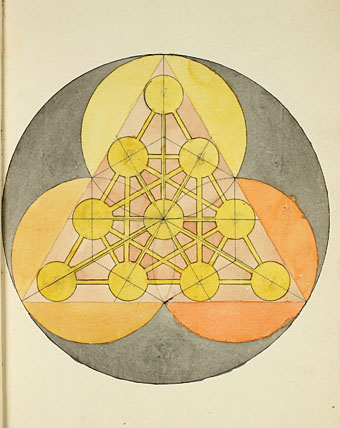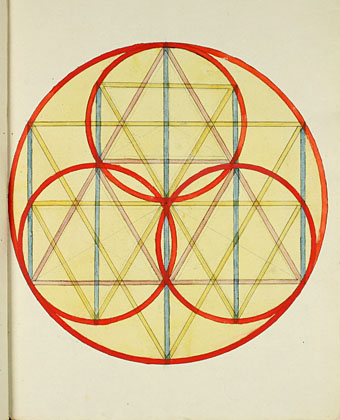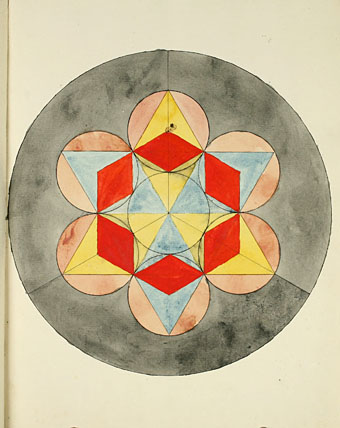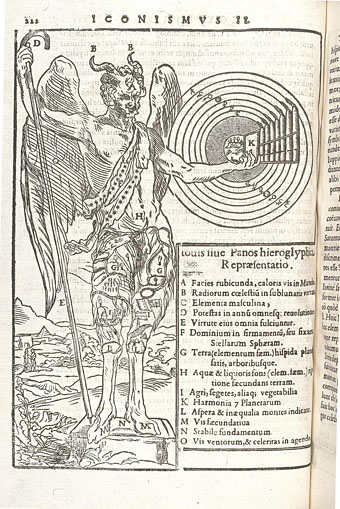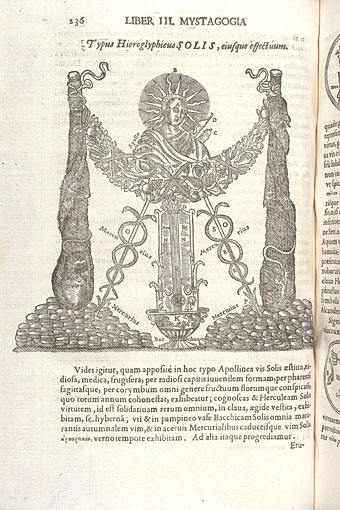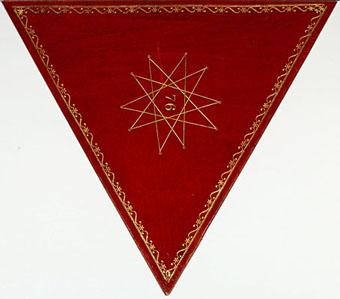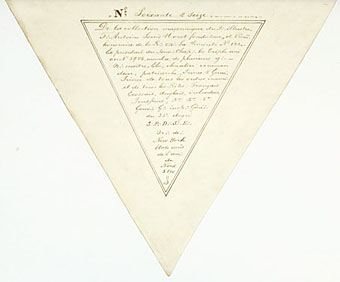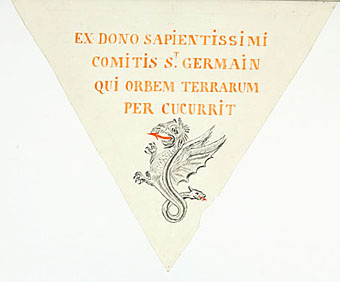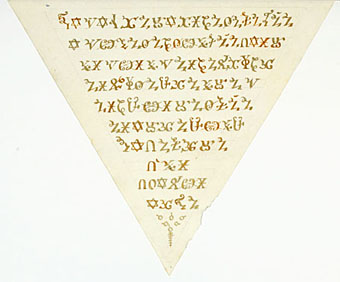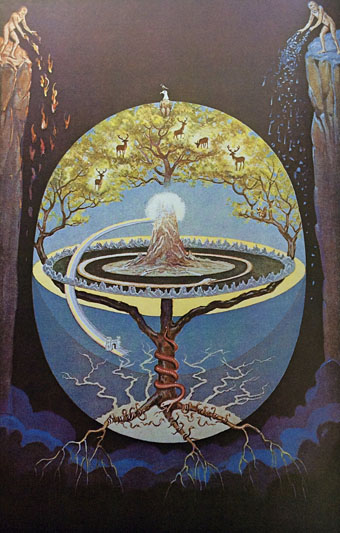
Yggdrasil, the World Tree of Norse mythology.
Following up the work of Etidorhpa‘s illustrator, J. Augustus Knapp (1853–1938), I realised that I’d already encountered some of his later paintings. After illustrating books by John Uri Lloyd, Knapp moved to California where he met occult historian, mystic and book collector Manly Palmer Hall. Knapp exchanged Lloyd’s fungi researches and weird fiction for Hall’s mysticism, illustrating The Initiates of the Flame (1922), and Hall’s magnum opus, The Secret Teachings of All Ages (1928). Knapp’s 54 paintings for the latter volume have since proved convenient for the occult encyclopedias that followed, many of which plundered Hall’s study for its illustrations. Knapp’s depictions aren’t always very successful—Odin’s wolves look silly rather than fierce—but they served Hall’s purpose of fixing mythological characters and metaphysical schemes in a colourful manner for a contemporary audience.
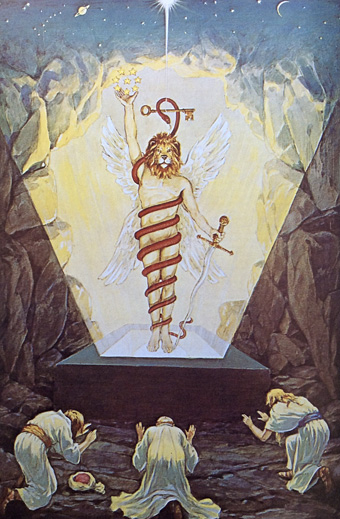
Mithra in the form of Boundless Time.
Hall and Knapp also produced their own Tarot deck (see here and here) which can still be bought today from the University of Philosophical Research in Los Angeles. The UPR was founded by Manly Hall, and has a collection of Knapp’s paintings. They also sell Hall’s books, of course, and you can browse a copy of The Secret Teachings of All Ages if you visit the library, as I discovered in 2005 when Jay Babcock and I paid the place a visit.
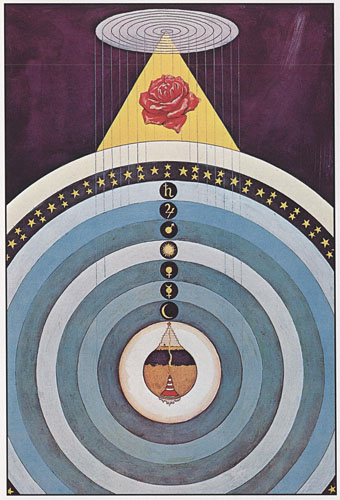
The Key to Dante’s Divine Comedy.
Continue reading “The occult Knapp”
